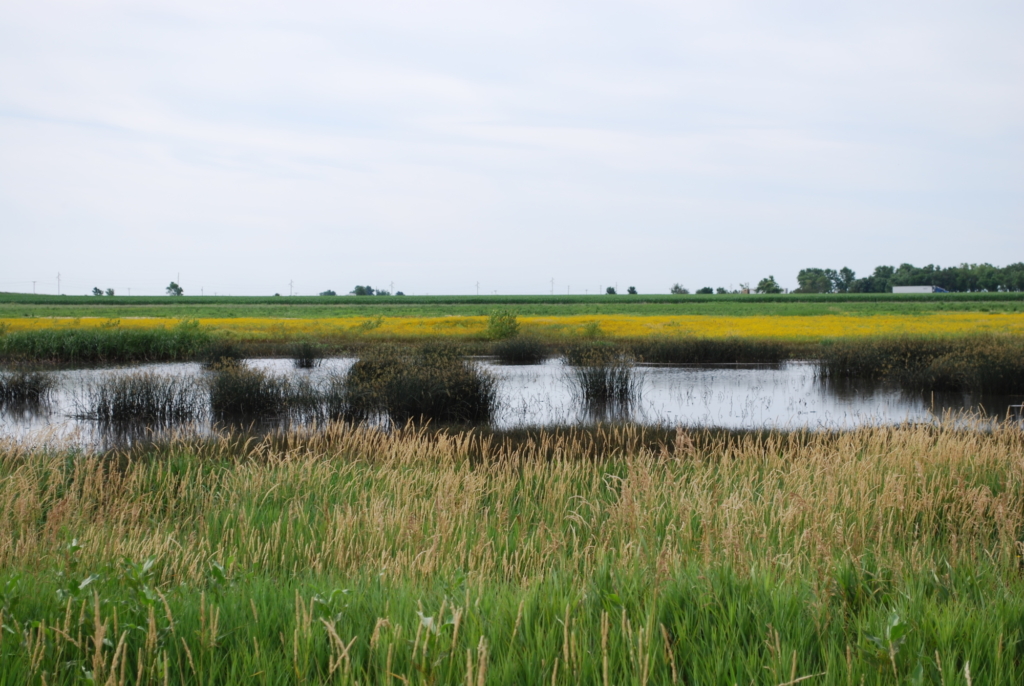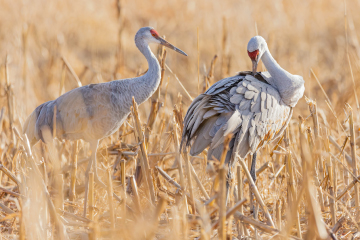 The name Playa (“ply-ah”) originates from the Spanish word for beach. In Nebraska, playas are shallow depressions that cycle through wet and dry periods. In the past, these were referred to by producers as buffalo wallows, mud puddles, or wasteland. The Rainwater Basin Wetland Complex is a unique cluster of these wetlands. Here in Nebraska, this landscape is located north of the Republican River and South of the Platte River extending west from Seward to Gosper counties. Historically over 11,000 wetlands covered over 200,000 acres in this region. Each of these wetlands had a unique watershed that funnels water to the wetland. The fertile soils and abundant groundwater resources makes this landscape one of the most agriculturally productive regions in Nebraska.
The name Playa (“ply-ah”) originates from the Spanish word for beach. In Nebraska, playas are shallow depressions that cycle through wet and dry periods. In the past, these were referred to by producers as buffalo wallows, mud puddles, or wasteland. The Rainwater Basin Wetland Complex is a unique cluster of these wetlands. Here in Nebraska, this landscape is located north of the Republican River and South of the Platte River extending west from Seward to Gosper counties. Historically over 11,000 wetlands covered over 200,000 acres in this region. Each of these wetlands had a unique watershed that funnels water to the wetland. The fertile soils and abundant groundwater resources makes this landscape one of the most agriculturally productive regions in Nebraska.
To maximize ag production, many wetlands were drained and now as a result, only 10% of the wetlands function. This is problematic since 8.6 million waterfowl rely on these wetlands each year. When large congregations of waterfowl are forced into limited habitat, birds become stressed, resulting in die-offs from avian cholera. Stressed birds cannot forage effectively, which impacts populations since waterfowl put on 20% of their body mass during spring migration in preparation for nesting. Healthy birds initiate nesting earlier, lay larger clutches, and are more apt to re-nest if an initial nest is lost. All of these traits contribute to population sustainability.
In addition to providing important habitat, these wetlands are significant groundwater recharge points to the underlying aquifer. Groundwater monitoring suggests that one acre of playa ponding water for 35 days can recharge 1.14 million gallons of water. This is sufficient water for 100 residents based on the average municipal water use of Lincoln or sufficient groundwater for a six-inch irrigation allocation on 3.5 acres of farmland.
More Habitat Happenings: Eastern Red Cedars



